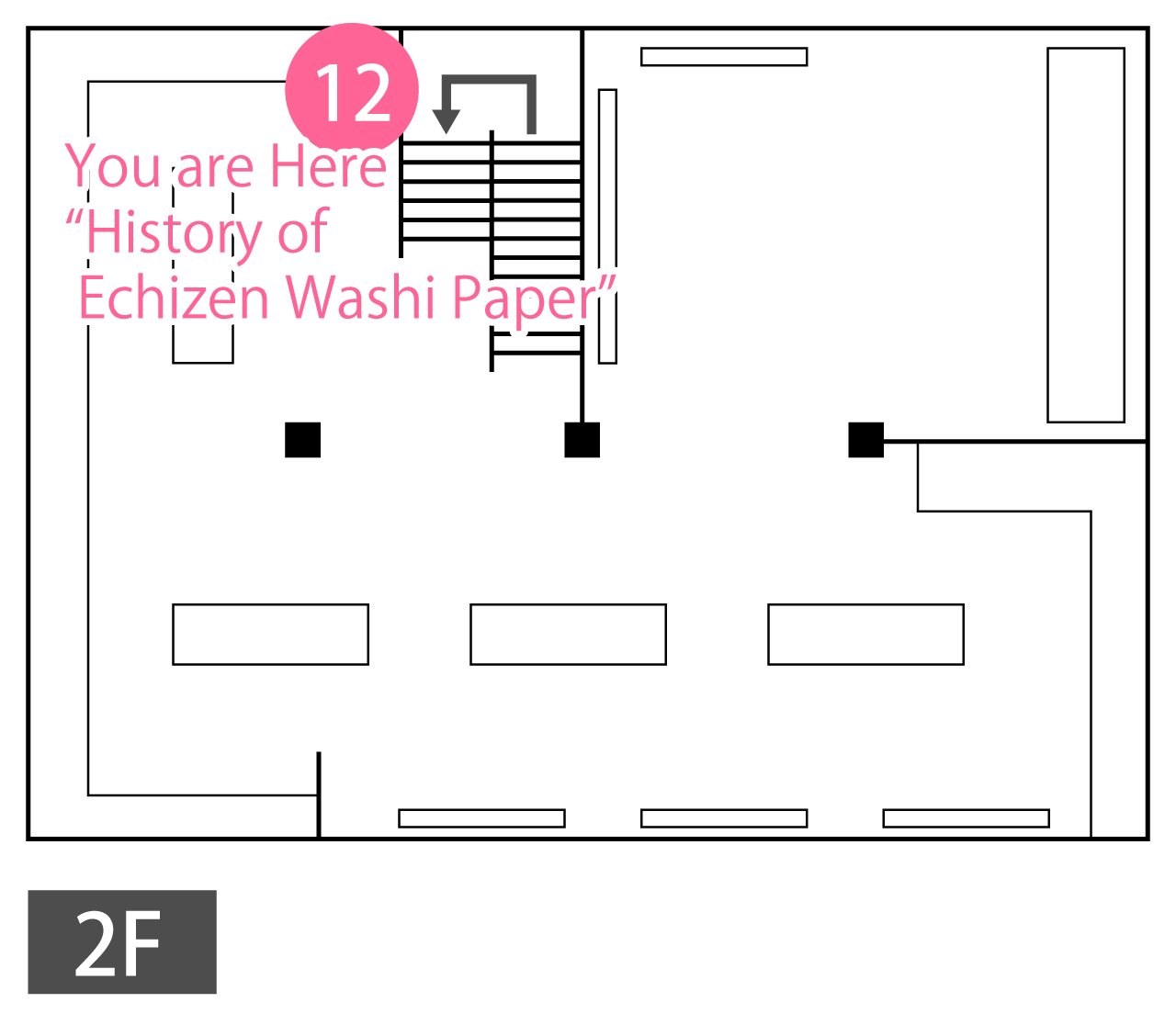 |
[12] History of Echizen Washi Paper |

|
On the second floor of the museum, you'll find information about the birth of paper in Echizen against a backdrop of Japanese history, as well as the transitions seen by the paper industry.
|

Antiquity
3000 B.C. – 1192 A.D. |
In the world of ancient times there had been papyrus, stone and clay tablets, parchment and even the leaves of trees used to write on, In Japan, during the Nara period (710–794), thin narrow strips of wood were also used. These surfaces all were employed as a means of communication before paper appeared but all were inferior.
It had been said that Sairin, a Chinese man, had invented paper but an earlier form of Chinese paper later was discovered: Hobatan-shi (Hobatan-paper).
The paper first introduced to Japan by China was Tame-zuki. Tame-zuki is the process of placing the fibers on a screen to drain but they are not shaken as with the Nagashi process. From the late Nara period to the early Heian period (794–1185) paper was produced by the Nagashi process, a process invented in Japan. by using the Nagashi process they succeeded in creating paper of uniform thickness. This completed form of paper proved that the Japanese had mastered the paper making process.
|

Middle Ages
1192 A.D. - 1603 A.D. |
Washi was originally used to copy Buddhist scriptures of sutras, to record the family register, and lastly it was used by ladies of high society to express their poetry (waka). In this period even samurai families, merchant and middle classes began to use paper in their daily lives; traditionally Washi was reserved only for the highest classes. Echizen Hosho and Echizen Torinoko were the classifications of paper in use.
In the period Otaki temple established a union of Echizen washi paper producers. Nobunaga Oda, the first ruler to govern all of Japan, gave this union a special seal. The seal was called "Shippo", this means seven treasures. Hideyoshi Toyotomi, Oda's successor, gave them the "Kiri", or paulownia wood, seal. At this time paper was very important and the privilege of the seal protected the paper makers and acted as a type of patent.
|

Early Modern Period
1603 A.D. – 1868 A.D. |
Echizen Washi was produced mainly in the Echizen area. The Shogunate and many other feudal domains ordered only Echizen Washi. Echizen produced many kinds of paper including Hosho and Torinoko. These high quality papers were long lasting and survived many centuries. The reputation of Echizen Washi became well-known and respected during this period.
Paper production has always been, and will always be, very important in our daily lives. To improve the techniques of production producers travelled to and from the Echizen area in order to perfect their skills.
For the first time in 1661, paper was produced for currency in the Fukui domain. A notable event in the history of paper-making.
|

Modern History
1868 A.D. - Present |
The techniques of Echizen Washi craftsmen contributed to the completion of producing paper for currency in the Fukui domain during the Meiji goverment's rule, Modern paper money, and in establishing the prestigious position of being a paper money village.
The waves production. The machine was introduced without hesitation into the paper making process. New techniqus were created one after another, making way for increased paper production.
Thanks to techniques of producing large sizes of paper, as well as many varieties of paper, producers had the opportunity to creatively exchange with modern fine artists. Paper was created for painting, as well as for many other artistic handcrafts.
|

| Floor Map |

|

|

